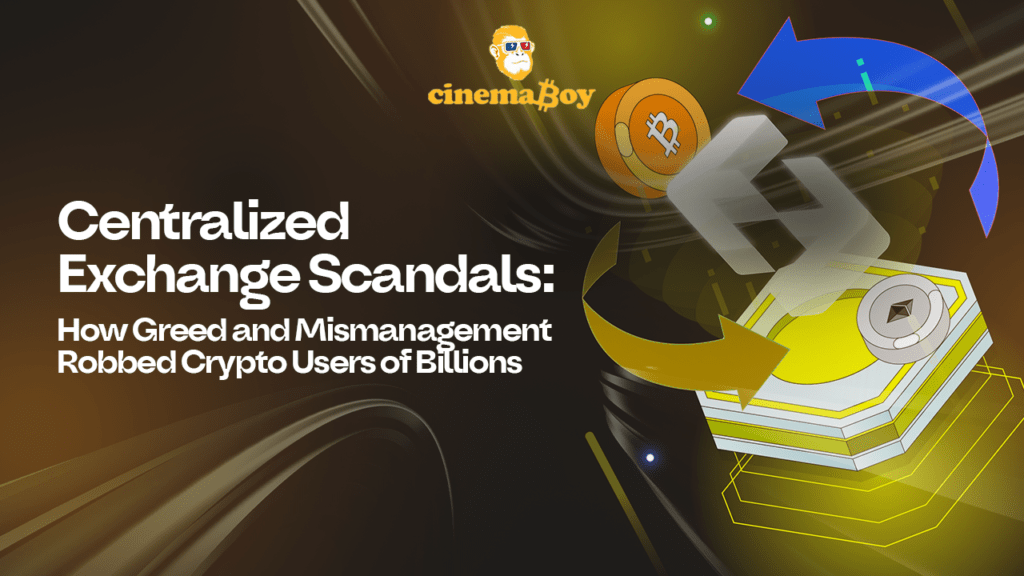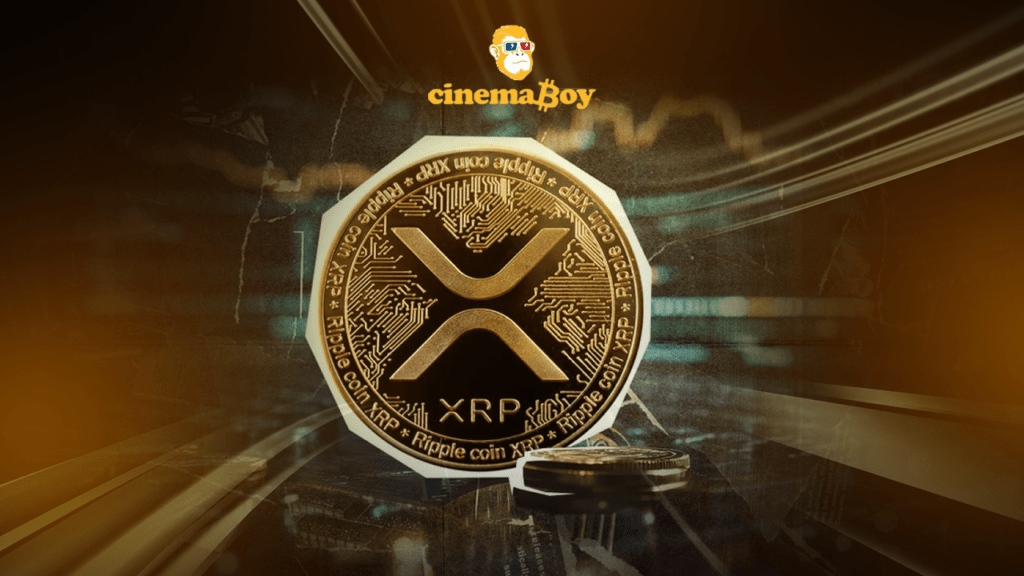Get Ready for Liftoff: 5 Crypto Listing That Will Skyrocket in 2025

As cryptocurrency adoption surges, investors actively seek upcoming crypto listings on exchanges offering high growth potential. New crypto exchange listings drive increased liquidity, investor confidence, and potential price surges, making them attractive investment opportunities. Our team has identified five promising projects that are expected to be listed on exchanges in 2025: 1. Solaxy (SOLX) – First-Ever Layer 2 Scaling Solution for Solana Solaxy is Solana’s first Layer 2 scaling solution, designed to enhance network efficiency by reducing congestion and transaction fees. As Solana gains traction, Solaxy’s unique interoperability with Ethereum strengthens its market position. Solaxy’s growing investor confidence and its role in enhancing Solana’s scalability make it a strong contender for major exchange listings. 2. Mind of Pepe (MIND): Mind of Pepe is leveraging AI to analyze, predict, and influence crypto market trends. Its autonomous AI agent engages with social media and blockchain activity to provide valuable insights for investors. Expected listing: Q1 2025. Presale funds raised: $5.1M. Staking rewards: 442% APY. Potential exchanges: Binance, OKX, Bybit. Read Also: Crypto Carnage: The Rise and Fall of Centralized… 3. Meme Index (MEMEX): The Meme Index simplifies meme coin investing by offering an index token that gives exposure to multiple meme coins with varying risk levels. Its governance model allows holders to vote on index compositions. Expected listing: March 2025. Presale funds raised: $3.3M. Staking rewards: 882% APY. Potential exchanges: Huobi, MEXC, BitMart. 4. Best Wallet Token (BEST): Best Wallet Token enhances crypto wallet functionality by offering reduced transaction fees, governance rights, and access to an integrated DEX and launchpad. Expected listing: TBA. Presale funds raised: $9.1M. Staking rewards: 237% APY. Potential exchanges: KuCoin (link unavailable) and Bitget. 5. Wall Street Pepe (WEPE): Wall Street Pepe combines meme culture with trading insights and market analysis tools to give retail investors a competitive edge. Expected listing: Q1 2025. Presale funds raised: $68.8M. Staking rewards: 24% APY. Potential exchanges: Binance, OKX, Bybit. Our team is actively monitoring these projects and identifying the key factors that determine a crypto listing on major exchanges, including: To capitalize on new crypto exchange listings, investors should: By actively identifying and investing in these upcoming crypto listings, investors can strategically position themselves for potential gains in the evolving crypto market.
Crypto Carnage: The Rise and Fall of Centralized Exchange Scams – How Billions Were Lost and Trust Was Shattered

The cryptocurrency industry, once hailed as the future of finance, has been marred by a series of high-profile scandals involving centralized exchanges. These platforms, designed to facilitate the trading of digital assets, have become breeding grounds for fraud, mismanagement, and outright theft. From the infamous collapse of Mt. Gox to the shocking downfall of FTX, the stories of these exchanges reveal a troubling pattern of greed, negligence, and betrayal. This article delves into the dark side of centralized exchanges, exploring how billions of dollars were lost, trust was shattered, and what lessons can be learned to prevent future disasters. The Allure and Danger of Centralized Exchanges Centralized exchanges (CEXs) have long been the gateway for millions of users to enter the world of cryptocurrencies. They offer convenience, liquidity, and a user-friendly interface, making them the preferred choice for novice and experienced traders. However, this centralization comes with significant risks. Unlike decentralized exchanges (DEXs), which operate on blockchain technology and allow users to retain control of their funds, CEXs require users to deposit their assets into the exchange’s custody. This creates a single point of failure, leaving users vulnerable to hacking, mismanagement, and outright scams. The Infamous Collapse of Mt. Gox The story of centralized exchange scams begins with Mt. Gox, once the largest Bitcoin exchange in the world. Founded in 2010, Mt. Gox handled over 70% of all Bitcoin transactions at its peak. However, in 2014, the exchange abruptly halted withdrawals, citing technical issues. It was later revealed that Mt. Gox had lost approximately 850,000 BTC (worth around $450 million at the time) due to a combination of hacking and alleged mismanagement by its CEO, Mark Karpelès. The collapse of Mt. Gox sent shockwaves through the cryptocurrency community, eroding trust in centralized exchanges and highlighting the need for better security measures. Karpelès was arrested and faced legal proceedings in Japan, but the damage was done. Thousands of users lost their funds, and the incident remains one of the most significant black marks in the history of cryptocurrency. Read more: Best Crypto Presales of 2025: Which Token at $0.01 USDT Will Skyrocket First? The BitConnect Ponzi Scheme BitConnect, a cryptocurrency exchange and lending platform, is another notorious example of how centralized exchanges can be used to perpetrate fraud. Operating as a high-yield investment program, BitConnect promised users astronomical returns. However, in 2018, the platform collapsed, revealing itself to be a Ponzi scheme that defrauded billions of dollars of investors. The founder, Satish Kumbhani, was charged by the U.S. Securities and Exchange Commission (SEC) and is currently a fugitive. The BitConnect scandal not only resulted in massive financial losses but also damaged the reputation of the entire cryptocurrency industry, as it highlighted the prevalence of fraudulent schemes masquerading as legitimate investment opportunities. The Thodex Heist In 2021, the Turkish exchange Thodex made headlines when it abruptly halted withdrawals, and its CEO, Faruk Fatih Özer, fled the country with an estimated $2 billion in user funds. The incident left hundreds of thousands of users in financial ruin and sparked outrage across the cryptocurrency community. Özer was eventually arrested in Albania in 2022 and faces extradition to Turkey. The Thodex heist is a stark reminder of the risks associated with centralized exchanges, particularly in regions with lax regulatory oversight. It also underscores the importance of thorough due diligence before trusting an exchange with your funds. The FTX Debacle Perhaps the most shocking and high-profile case in recent years is the collapse of FTX, once one of the world’s largest and most respected cryptocurrency exchanges. Founded by Sam Bankman-Fried (SBF), FTX was hailed as a model of innovation and transparency in the crypto industry. However, in 2022, the exchange imploded, revealing a web of mismanagement, fraud, and misuse of customer funds. Bankman-Fried was arrested and charged with multiple counts of fraud, including allegations that he used customer funds to prop up his hedge fund, Alameda Research. The collapse of FTX resulted in billions of dollars in losses and sent shockwaves through the financial world. Bankman-Fried was found guilty in 2023 and faces significant prison time, but the fallout from the FTX debacle continues to reverberate throughout the industry. Related article: 56% Approval Odds: Will Dogecoin ETFs Finally Get the Green Light? Lessons Learned and the Path Forward The stories of these centralized exchange scams serve as cautionary tales for the cryptocurrency industry. They highlight the dangers of centralization, the importance of transparency, and the need for robust regulatory oversight. While the promise of decentralized finance (DeFi) offers a potential solution to some of these issues, the road to widespread adoption is fraught with challenges. For users, the key takeaway is to exercise caution and conduct thorough research before trusting any exchange with their funds. Decentralized exchanges and self-custody solutions offer greater security and control but also come with risks and complexities. Conclusion: Trust, but Verify The rise and fall of centralized exchange scams have left an indelible mark on the cryptocurrency industry. While the promise of digital assets remains as compelling as ever, the stories of Mt. Gox, QuadrigaCX, BitConnect, Thodex, and FTX are stark reminders of the risks involved. As the industry moves forward, it must prioritize transparency, accountability, and security to ensure that the mistakes of the past are not repeated. For users, the mantra remains the same: trust but verify.
XRP Surges with $11.2M Weekly Inflow – Can It Break $2.37 Resistance?

Institutional investors continue pouring money into XRP, with inflows surpassing other major altcoins. CoinShares’ Head of Research, James Butterfill, reported that XRP attracted $11.2 million in inflows this week, far exceeding Solana’s $3 million. Year-to-date, XRP has secured $116 million in inflows, outpacing Solana’s $29 million by four times. Large investors and whales seem confident in XRP’s long-term growth, increasing speculation about a potential price rebound. This influx arrives at a crucial moment as the market speculates on key catalysts for XRP’s recovery. With institutional adoption on the rise and regulatory clarity improving, investors closely watch the token for signs of a breakout. XRP ETF Filing and SEC Case Developments Boost Optimism Several macroeconomic factors could impact XRP’s price trajectory in the coming months. The Chicago Board Options Exchange (CBOE) has filed a 19b-4 with the U.S. Securities and Exchange Commission (SEC) to approve an XRP exchange-traded fund (ETF). 21Shares, Bitwise, WisdomTree, and Canary Capital support this filing, signaling an important step toward mainstream adoption. Legal analysts expect major developments in the Ripple vs. SEC case by 2025. Some believe the SEC might drop several crypto-related lawsuits under new regulatory policies. A favorable outcome could fuel a surge in XRP demand, boosting investor confidence and driving prices higher. If regulatory uncertainty clears, XRP could see a strong uptrend in the near future. Read Also: Cardano (ADA) Drops 37%, Then Jumps 41% –… XRP trades around $2.28, facing strong resistance at key levels. The 50-day Exponential Moving Average (EMA) at $2.48 continues to act as dynamic resistance, reinforcing a short-term bearish trend. The prevailing trendline suggests XRP will remain in a downtrend unless it breaks above the critical $2.37 pivot point. If XRP breaks above $2.37, it could gain momentum and push toward the next resistance levels at $2.56 and $2.79. A breakout beyond these levels might trigger a bullish rally, allowing it to reclaim higher price territories. However, if the price fails to surpass resistance, sellers will likely maintain control. If the token falls below $2.20, it could experience accelerated selling pressure, exposing it to further downside risks. Traders remain cautious, monitoring broader market trends and macroeconomic factors to determine XRP’s next move. Whales Accumulate 520M XRP, Strengthening Bullish Sentiment Whales have accumulated over 520 million XRP in recent weeks, reinforcing long-term bullish sentiment. Their increasing holdings suggest expectations of a future price surge, likely fueled by regulatory clarity and institutional adoption. While short-term technical resistance persists, large-scale investors continue adding to their positions, signaling confidence in XRP’s future potential. Read Also: Cardano Expands Institutional Reach with Virtune’s New ADA… Institutional inflows into XRP remain strong, surpassing those of Solana. The latest XRP ETF filing, backed by leading asset managers, further strengthens its adoption case. Meanwhile, Ripple’s legal battle with the SEC could reach a resolution in 2025, potentially acting as a major bullish catalyst. Despite the bearish technical outlook, the token may rally if it breaks above $2.37 and maintains upward momentum.

